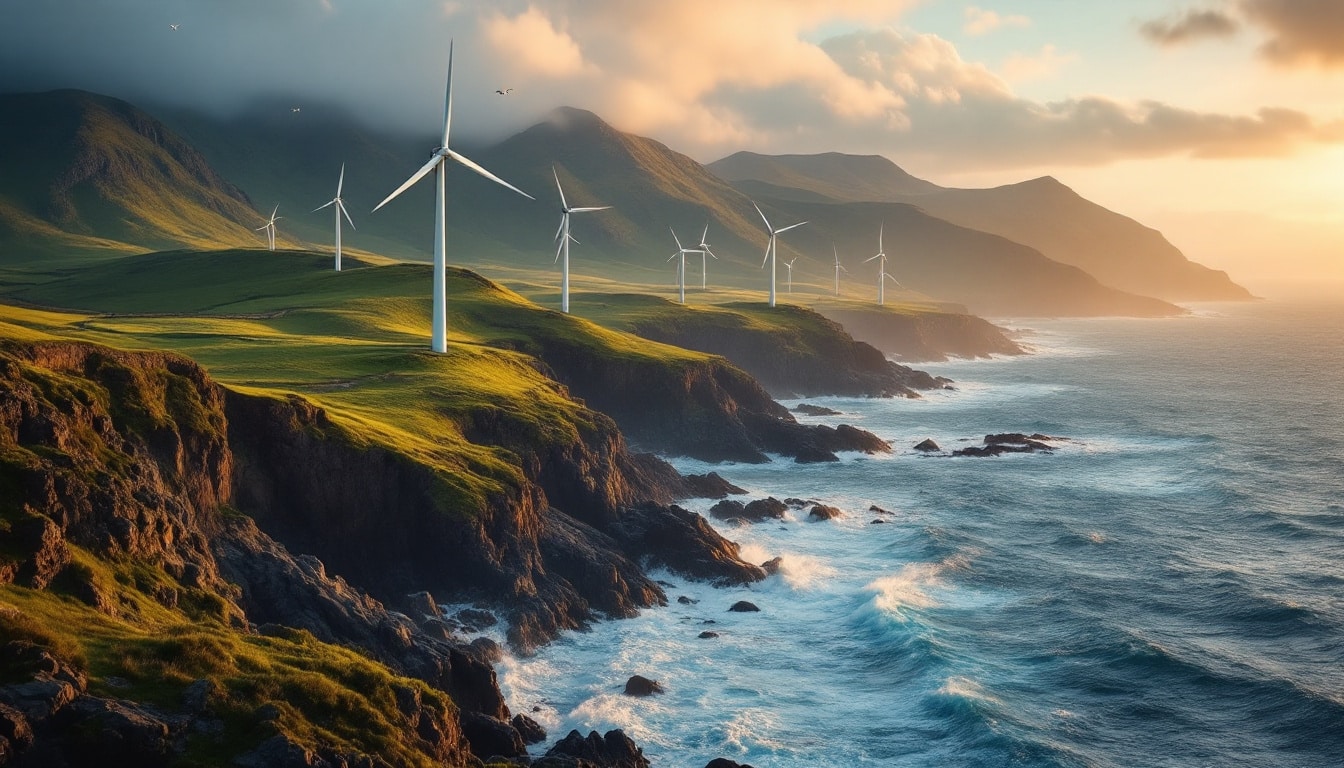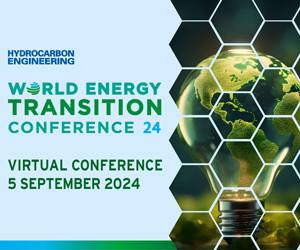In today’s digital universe, data management is essential.
Cookies play a key role in the functioning of online services.
They not only help maintain services but also improve the user experience.
Cookies are used to track outages and protect against spam, fraud, and abuse. They also measure audience engagement and site statistics to understand the use of our services and to improve quality. By choosing “Accept all,” we can develop and refine new services while evaluating the effectiveness of advertisements. Furthermore, this allows us to personalize content and ads based on your preferences and past activity.

Table of Contents
ToggleScotland welcomes a new offshore energy installation
Scotland, known for its commitment to renewable energy, is welcoming a new offshore energy installation that promises to transform the maritime energy landscape. This initiative is part of a national strategy aimed at reducing carbon emissions and enhancing the country’s energy sovereignty. The new infrastructure utilizes cutting-edge technologies to harness wind and marine potential, thereby positioning Scotland as a leader in sustainable marine technologies.
What are the main objectives of this offshore energy installation?
The new offshore energy installation in Scotland has several key objectives. First, it aims to increase the country’s renewable energy production capacity by harnessing the abundant marine winds that characterize the Scottish coasts. By integrating advanced wind technologies, this installation contributes to the national goal of generating a significant portion of its energy from renewable sources, thereby reducing reliance on fossil fuels.
Additionally, this infrastructure plays a crucial role in creating local jobs and in the economic development of coastal regions. By attracting investors and fostering technological innovation, Scotland strengthens its positioning as a hub for marine technologies. This initiative is also part of a long-term vision of sustainability, ensuring that the new installations meet the highest environmental standards.
Finally, this installation contributes to the energy security of the country by diversifying energy sources and increasing the resilience of the electrical network against fluctuations in international markets. By investing in offshore infrastructure, Scotland is preparing for a more stable and autonomous energy future.
What are the environmental impacts of this new installation?
One of the main benefits of this offshore energy installation is its low environmental impact. By utilizing renewable energies such as wind, it significantly reduces greenhouse gas emissions. Unlike traditional power plants, this installation does not produce air pollutants, thus contributing to the fight against climate change.
Moreover, the technologies employed are designed to minimize impact on marine wildlife. Extensive studies have been conducted to ensure that the wind turbines do not disrupt local ecosystems. Measures such as installing old submarines to limit noise and fish migration are implemented to preserve marine biodiversity.
The establishment of this installation also promotes the preservation of natural resources by reducing dependence on fossil fuels. By adopting a sustainable approach, Scotland is committed to protecting its precious marine ecosystems for future generations.
How does this installation fit into Scotland’s overall energy landscape?
The new offshore energy installation fits perfectly into Scotland’s national energy plan, which aims to achieve carbon neutrality by 2045. It complements other ongoing projects, such as the VLOC Sohar Max, the largest ship in the world powered by wind technology, and other innovative initiatives in the maritime field.
Scotland also benefits from its strategic geographic position to develop infrastructure for energy production and distribution in the North Sea, one of the richest basins in wind resources worldwide. This installation enhances the country’s capacity to export renewable energy to other regions, thus contributing to creating a more integrated and sustainable energy market.
Furthermore, this installation aligns with other projects, such as the bunker fuel market in Singapore, by promoting cleaner and more efficient energy solutions for the maritime sector. This synergy between various initiatives allows Scotland to maximize the impact of its investments in renewable energy.
What challenges are faced when establishing this installation?
Establishing an offshore energy installation of this scale is not without challenges. One of the main obstacles is the high cost of the technologies necessary to harness offshore wind energy. While initial investments are considerable, the long-term benefits, such as reducing energy costs and creating jobs, greatly outweigh these expenses.
Another major challenge concerns extreme weather conditions and harsh marine environments. Wind turbines must be designed to withstand violent winds and salt corrosion, ensuring their durability and reliability. Innovative solutions, such as corrosion-resistant materials and automated maintenance systems, are being implemented to overcome these obstacles.
Moreover, obtaining environmental permits and managing partnerships with local stakeholders represent additional challenges. It is essential to collaborate closely with local communities, authorities, and environmental organizations to ensure a smooth and environmentally respectful implementation.
Finally, developing the infrastructure necessary for distributing the energy produced offshore to the land network poses another logistical challenge. Investments in transport networks and energy storage technologies are essential to maximize the efficiency and reliability of this new energy installation.
What is the economic impact of this installation on local regions?
The offshore energy installation has a significant economic impact on Scotland’s coastal regions. It creates numerous jobs, both direct and indirect, in the fields of construction, maintenance, and marine engineering. By fostering the training of professionals specialized in marine technologies, it contributes to local skill development and makes Scotland an attractive destination for innovative businesses.
Additionally, this installation attracts foreign investments, thereby strengthening Scotland’s economic position in the global renewable energy market. Local companies also benefit from partnerships and collaborations with international players, thus stimulating innovation and competitiveness in the sector.
The rise of renewable energies, such as this one, also promotes the economic diversification of coastal regions, often reliant on traditional industries such as fishing and tourism. By integrating new sources of revenue, these regions become more resilient to fluctuations in the global economy.
Moreover, the income generated from exporting renewable energy contributes to the national budget, enabling further funding for other environmental and social initiatives. This economic synergy reinforces the sustainability of renewable energy projects and their social acceptability.
What are the feedback and experiences from stakeholders?
Feedback from stakeholders regarding the new offshore energy installation is generally positive. Experts in marine technologies commend the technological innovation and the robustness of the systems put in place. They also highlight the importance of this installation for sustainable development and Scotland’s energy transition.
Local communities express a sense of pride and support for this project, recognizing the economic and environmental benefits it brings. Local businesses involved in the project gain increased visibility and growth opportunities, thus reinforcing the regional economic fabric.
Environmental authorities also note the efforts made to minimize ecological impact, emphasizing measures to protect marine wildlife and compliance with strict environmental standards. This close collaboration between stakeholders ensures a smooth and respectful implementation of the project.
End users, for their part, benefit from cleaner and more affordable energy, contributing to a better quality of life and reducing their carbon footprint. Initiatives such as renewable energies are thus valued for their essential role in building a sustainable future.
What are the future perspectives for offshore energy installations in Scotland?
The future perspectives for offshore energy installations in Scotland are extremely promising. Capitalizing on this initial success, the country plans to expand its renewable energy production capabilities at sea by developing new offshore wind farms and integrating innovative technologies such as energy storage and green hydrogen.
Scotland also intends to strengthen its international partnerships by collaborating with other nations to share knowledge and technologies, and by participating in cross-border renewable energy projects. This collaborative approach maximizes resources and accelerates the energy transition on a global scale.
Additionally, advancements in marine biotechnology, such as the recent inauguration of a state-of-the-art laboratory, open up new perspectives for integrating biological solutions into energy technologies. These innovations help improve the efficiency and sustainability of offshore installations while preserving marine ecosystems.
The continuous development of energy transportation and distribution infrastructures, as well as the adoption of renewable-favorable policies, are essential to support this growth. By investing in research and development, Scotland ensures it remains at the forefront of energy technologies and maintains its role as a leader in the renewable energy sector.
Finally, the ongoing engagement of stakeholders and public support are crucial for the long-term success of these projects. By maintaining a clear vision and close collaboration, Scotland is well-positioned to continue welcoming and developing innovative and sustainable offshore energy installations.
To learn more about maritime energy initiatives in Scotland, you can consult the state-of-the-art marine biotechnology laboratory and discover how renewable energies are shaping our future in articles like the maritime industrial city of Lumut.









